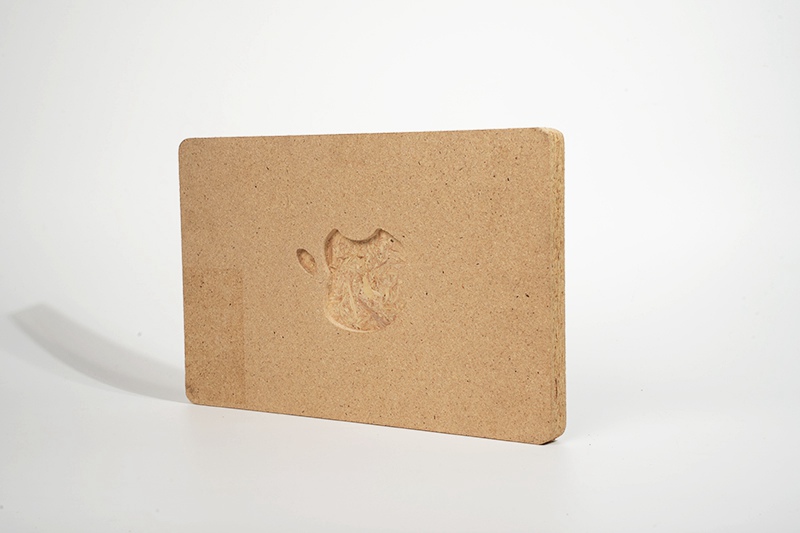How Much Does OSB Board Weigh?
The weight of OSB (oriented strand board) depends on several factors — including thickness, density, moisture content, and manufacturing type. Understanding OSB weight is essential when planning construction, furniture projects, or transportation logistics, as it affects load-bearing capacity, installation methods, and structural safety. Below is a detailed overview of how OSB weight is determined and how to estimate it accurately for different applications.
1. Factors That Affect OSB Board Weight
a) Thickness
The most direct factor influencing OSB board weight is its thickness. Standard OSB panels range from 6 mm to 25 mm, and each increase in thickness adds proportionally to the total mass. Thicker panels have more wood strands and adhesive, increasing both density and stiffness.
b) Density
Typical OSB has a density between 600 and 700 kg/m³.
Lightweight OSB (around 600 kg/m³) is used for interior wall panels and furniture.
High-density OSB (up to 700 kg/m³) is used for floors and structural framing.
The manufacturing process also affects density — pressing time, resin content, and strand orientation can slightly change the final weight.
c) Moisture Content
OSB absorbs small amounts of moisture from the environment. Boards with higher humidity may weigh 3–5% more than when completely dry. For outdoor or humid environments, moisture-protected OSB/3 or OSB/4 types are recommended.

2. Average Weight by Thickness
Below is an approximate reference for standard 4×8 ft (1220×2440 mm) OSB sheets. Actual weights can vary by brand and density:
| Thickness | Approx. Weight (kg per sheet) | Approx. Weight (lbs per sheet) | Common Use |
|---|---|---|---|
| 6 mm (1/4 in) | 16–18 kg | 35–40 lbs | Wall lining, ceiling panels |
| 9 mm (3/8 in) | 21–23 kg | 46–50 lbs | Furniture cores, partition boards |
| 12 mm (1/2 in) | 28–30 kg | 62–66 lbs | Roof sheathing, floor underlayment |
| 15 mm (5/8 in) | 34–37 kg | 75–82 lbs | Structural flooring |
| 18 mm (3/4 in) | 41–44 kg | 90–97 lbs | Heavy-duty walls, stage platforms |
| 25 mm (1 in) | 55–58 kg | 120–128 lbs | Industrial load-bearing structures |
These values assume a density of around 650 kg/m³ and dry storage conditions.
3. How to Calculate OSB Board Weight
If you know the dimensions and density of your board, you can estimate its weight with this formula:
Weight (kg) = Length (m) × Width (m) × Thickness (m) × Density (kg/m³)
Example:
For a 12 mm thick (0.012 m) OSB sheet measuring 1.22 × 2.44 m with a density of 650 kg/m³:
1.22 × 2.44 × 0.012 × 650 = 23.2 kg
This simple calculation works for any board size or density value.
4. Practical Considerations for OSB Weight
a) Transportation and Handling
OSB is relatively heavy compared to plywood. Workers should handle it with care, especially in thick panels above 18 mm. Using mechanical lifts or two-person carrying is recommended on construction sites.
b) Structural Design
Engineers consider OSB’s self-weight when designing floors, roofs, or wall systems. For example, 18 mm OSB adds approximately 13–15 kg/m² to a floor structure, so proper support spacing is required.
c) Installation Method
Due to its mass, OSB panels should be installed on stable frameworks using screws or ring-shank nails. Lightweight OSB/2 boards are easier to cut and mount in vertical applications like interior wall lining.
d) Moisture and Weather Resistance
If OSB is used in humid or outdoor areas, its weight can increase slightly due to absorbed moisture. Applying edge sealants, waterproof coatings, or surface laminates minimizes this effect.
5. Comparison with Other Materials
| Material | Average Density (kg/m³) | Relative Weight | Typical Use |
|---|---|---|---|
| OSB | 600–700 | Moderate | Structural panels, flooring |
| Plywood | 500–650 | Slightly lighter | Furniture, cabinetry |
| MDF | 700–800 | Heavier | Interior decorative panels |
| Particle Board | 600–680 | Similar | Furniture cores, shelving |
This shows that OSB offers a balanced weight-to-strength ratio, making it strong enough for structural work yet light enough for easy installation.
Conclusion
The weight of OSB board varies with thickness, density, and moisture, typically ranging from 16 to 58 kg per 4×8 ft sheet. Knowing the precise weight is crucial for safe handling, structural design, and logistics planning.
By selecting the right grade and thickness for your project — and accounting for environmental factors — OSB provides an ideal combination of strength, stability, and manageable weight for both residential and industrial applications.
Previous: Is Particle Board Strong?
Next: How Is OSB Board Made?

